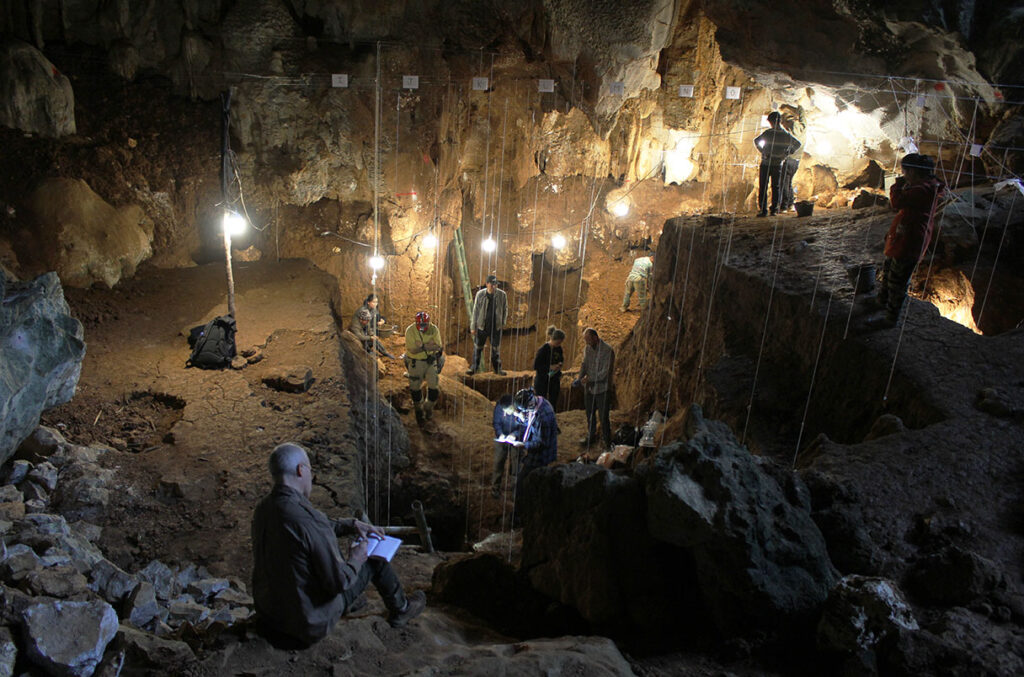
As many historical caves in Southeast Asia provide important sources of historical legacy of prehistoric human species in the region, groundbreaking discoveries are an inevitability.
A recent discovery of Homo sapiens fossils in Tam Pà Ling cave in Laos by a team of researchers indicates that the Homo sapiens arrived about 20,000 earlier in the region than the currently established facts.
About the Discovery

The discovery was made in the Tam Pà Ling cave in northeastern Laos, a cave in the Annamite Mountains long time renowned for being the site of the discovery of hominin and early modern human (EMH) fossils.
Researchers have just started to make the discovery of skulls dating back from 2009. In this cave, they have successfully collected fossils of ancient Homo sapiens instances that are usually hard to find in tropical regions.
Thanks to its natural protection against the surrounding humid rainforest, the Tam Pà Ling cave offers a solid protection for all kinds of fossils and other sediments. The gradual build-up of sediments from the heavy rains and the addition of new sediments over thousands of years eventually contributed to the fossils’ unusual resilience.
According to Vito Hernandez, one of the leading geoarchaeologists in the research team, they have managed to secure several fragments of human leg bones and a skull. During the discovery of and research on the fossils’ identity, the team deemed the latter as “unmistakable evidence” of the earlier arrival of the Homo sapiens in the subcontinent when compared to the age of other Homo sapiens fossils in the region.
Previously, the fossils of prehistoric humans were commonly found in places such as the Philippines and Indonesia, where the fossils of Homo luzonensis and Homo floresiensis were discovered respectively, Hernandez said.
To make the findings easily accessible to the public, the discovery and its study were published in the June 2023 issue of Nature Communications, an internationally renowned journal about natural science.
Hardships of Archeology in Southeast Asia
Searching for fossils of prehistoric humans in Southeast Asia is well-known for its difficulties. The humid and wet climate of the region often leaves many fossils highly susceptible to water and air exposure, ultimately compromising their structural integrity over time.
Since the fossils were securely deposited within the cave rather than in the forest, scientists have found it easier to locate fossils with better structural integrity compared to previous discoveries.
Why Should We Care About Our Ancestors?
Prehistoric human migration around the world has always been a subject of fascination by researchers, as this topic is intimately tied to the origins of our species as a whole. By gaining insights into the daily lives of our ancient ancestors, we can unravel the evolution of our species from its modest beginnings into a globe-spanning civilization.

This estimated map of the ancient human migration routes from Africa to Asia, Europe, and America tens of thousands of years ago shows how ancient humans traveled along the coastline of South and Southeast Asia before entering regions such as Central Asia and America.
Although the precise timeframe of these migrations is still subject to refinement (thanks to the discovery in the Tam Pà Ling cave), we can observe how early humans found it more feasible to migrate to the highlighted regions on this map. This was facilitated by the existence of land bridges like Sundaland, which allowed them to undertake migrations to Oceania at a later juncture.
Unanswered Questions
When asked about the nature of the discovery and what it means for the progression of science in the future, Hernandez stated that the discovery of these Homo sapiens fossils posed a greater question as to how the species managed to survive and thrive into the modern era whereas other human species at that time went extinct.
In his own words, understanding how these ancient humans managed to survive when others didn’t would give a solution to how we, as a species, survive for another millennia and beyond.
Since, there are more questions than answers to how the Homo sapiens persisted and flourished as others went extinct, assumptions such as disasters, plagues, and interbreeding of Homo sapiens with other human species would naturally be some of the most likely answers potentially explaining our species’ persistence.
By understanding the biological characteristics of ancient humans through the discovery of these fossils, Hernandez anticipates discerning whether the genetic lineage of ancient humans “still continue on” in ourselves.
Going Forward
Despite the challenges posed by the inherent features and conditions of Southeast Asia’s natural environment, the discovery made in the Tam Pà Ling cave will not mark the final discovery made by archaeologists in the times to come.
With more advanced technology and proper site excavation methods, researchers are eagerly poised to unveil further pioneering revelations concerning the history of Homo sapiens in Southeast Asia, aiming to provide the most precise answers regarding the narrative of our ancestors’ past.

About the author
Goes by Rizqi, he is a passionate writer from Indonesia with an interest to just anything that catches his attention. Captivated in so many topics ranging from foreign policy to IT as well as anything related to pop culture. Looks forward to being a specialist in writing articles about Japanese studies.